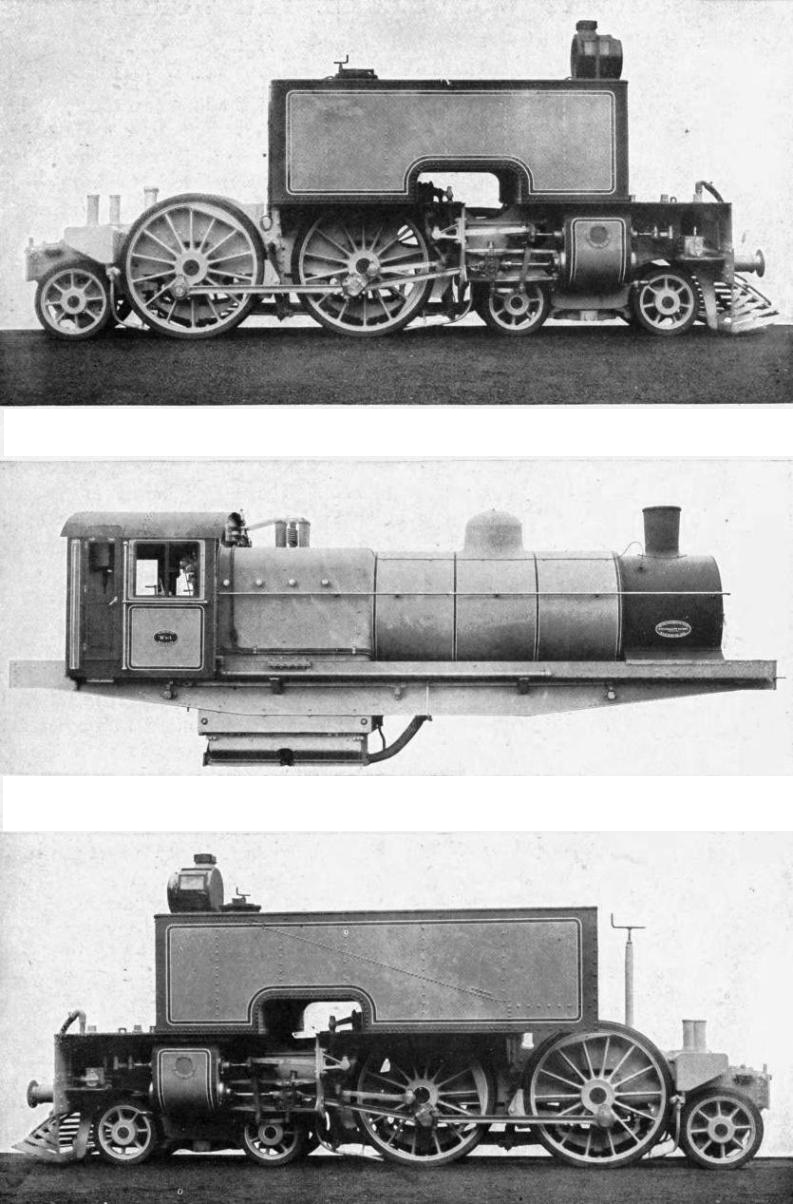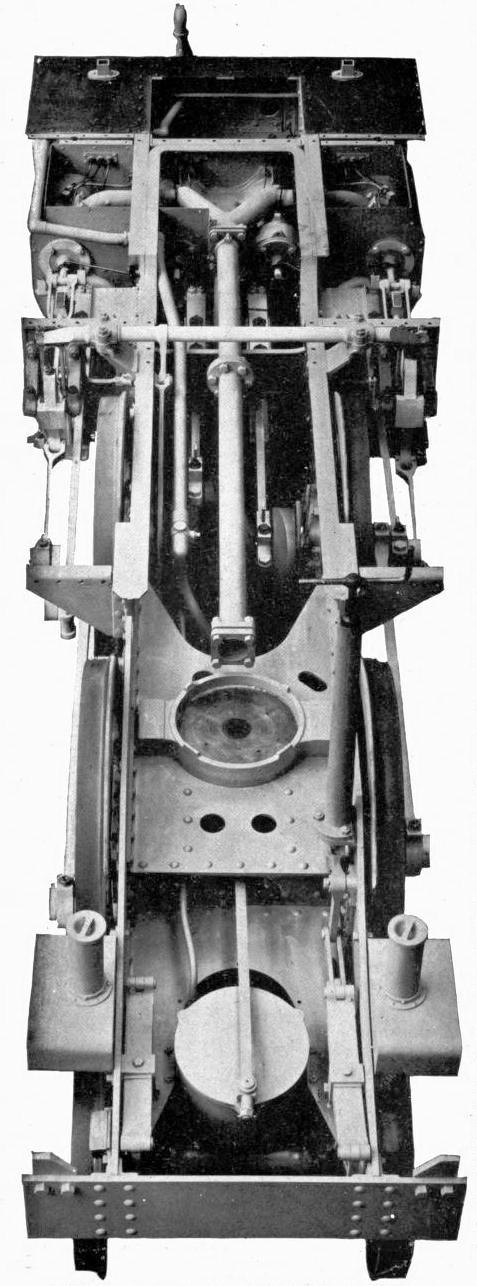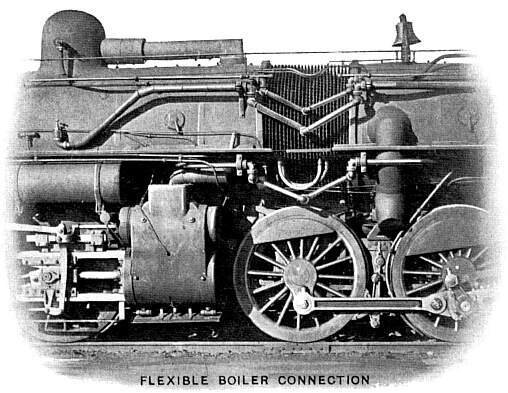Is there any one making these bold and radical locomotives any longer. Of course we tinker with the insides and software but is anyone making some real eye popping total shifts in thinking and engineering as we did in the Classic past?




Is there any one making these bold and radical locomotives any longer. Of course we tinker with the insides and software but is anyone making some real eye popping total shifts in thinking and engineering as we did in the Classic past?




You’ve got some acknowledged whoppers in there. Leader is perhaps the best example of a wrong answer to a question nobody asked that exists – and I speak as someone who appreciates much of the tech in the design that actually functioned (“worked” is really semantically wrong in context). Gresley’s ‘hush-hush’ even had problems with airflow under the shrouding; while you’re on the topic of high-pressure designs with a curl in the middle of their forehead, be sure to mention the aptly-in-retrospect-named Fury.
The GT-1 is cuter than a bug’s ear to a steam fan … but as innovative motive power for actually pulling trains (let alone doing so in a cost-effective manner) not so good. When I read about it I am somehow reminded of an old sailplane article discussing research in yaw strings (it mentioned the special alloy version for hypersonic gliders…) At least the North American Alco A-100 had a legitimate reason for retaining the side-rod drive. (My fingers, in a kind of Freudian slip, kept trying to type ‘drivel’ for that last word!)
As you probably know, I’m fond of immensely-overcomplicated motor locomotives, and the Sentinel probably qualifies in the top tier. If you thought a McKeen car was interesting to keep running, try six of them in parallel, built in the best English shop-steward tradition, and then add all the fun of steam as a working fluid. This for locomotives running at relatively slow speed on indifferent track, not mainline service. Think “all the costs of a diesel locomotive, and few of the advantages”.
I’m surprised you did not mention the Fell locomotive. Perhaps because not steam?
One very good reference everyone interested in the topic of this thread should read is Fryer’s book on experimental steam. There is more stuff in there that will curl your hair if you are interested in innovation that did not always pass the
No not because it was not steam. Wasn’t going to push my luck with another picture and it was late.
Not many great pics of it that I can find but I’m sure others can.
The Fell Diesel at Derby Works
A senior professor of economics at Columbia had as a hobby designed a regenerative ‘transmission’ for New York subway cars that featured some of the Fell gearbox action. It was delightful to hear him explain all the different details, although he could never quite convince me that it would be cost-effective to put them on a large number of cars and keep them operating automatically and flawlessly after years of NYCTA maintenance… much the same sort of questions that “should” have been asked before building the Fell locomotive.
I spoze it’s still a good idea, in theory, if you can afford to use multiple engines as ballast and are certain they can all be kept runnable and road-startable in all weathers. My experience with British internal lack of combustion makes me more than usually nervous about the general idea; my experience with British quality control makes me wonder how many Baldwin-like aspects of the actual construction of the locomotive contributed toward the ‘experience’.
The first engine class I’d nominate for actual groundbreaking astonishment is the original Tasmanian M: a double-four-cylindered Atlantic Garratt (among the very first of the type built). Oh yes: four cylinders on Cape gauge, yet more fun to fit into the loading gage, although hard to sneeze at 60+mph on 42" drivers, not too possible otherwise… even N-zed-R only put three cylinders in on their Garratt engines (which was probably one more than advisable, although similarly glorious). Sharpe, who would certainly be one to know, said “the Class M was a bit bonkers, but rather cool anyway.” If I had my druthers, this would be the next replica after finishing the 242 A1. (We’ll see if Mike can find some in-service pictures; these were on top of all the engineering splendidly painted and lined out!)
Those things look strange.
I’m not surprised they didn’t catch on, nothing strange ever seems to.
Maybe a “Classic Trains” article, or even a book titled “Too Weird To Work” concerning the same is called for?
Just strange.
No, just a revival. Remember Rosemary’s “Would You Believe It”?
UNITS OF THE EIGHT-CYLINDERED GARRATT LOCOMOTIVE
“(From top to bottom) Front engine unit; Boiler and frame; rear engine unit”

From Railway Wonders of the World:
https://railwaywondersoftheworld.com/beyer-garratt.html

From Railway Wonders of the World:
https://railwaywondersoftheworld.com/beyer-garratt.html
I really want to hear the surround sound of an 8-cylindered steam engine running at high speed.
Well, actually no. I remember “Rosemary’s Baby” [}:)] and Ripley’s “Believe It Or Not,” but I’ve never heard of Rosemary’s “Would You Believe it?”
Was she a railfan chronicler of the offbeat in motive power? [:-^]
Garrett’s are kinda strange too, but at least they worked. Now that mini-Garrett in Tasmania’s kinda strange. Someone run it through a hot wash by mistake? It’s shrunk!
How have we got this far without mentioning the name “Douglas Self?”
http://www.douglas-self.com/MUSEUM/LOCOLOCO/locoloco.htm
For example, even Sentinel realised that the Colombian loco was not the way to go and built a sort of Budd car with twin underfloor 250HP engines, although the water tube boiler and cab used up the space above the frame.
http://www.douglas-self.com/MUSEUM/LOCOLOCO/argmotor/argmotor.htm
No discussion of experimental steam locomotives should be carried out without reading this. I recommend…
http://www.douglas-self.com/MUSEUM/LOCOLOCO/russ/russrefr.htm
Particularly the Diesel-Steam opposed piston hybrids.
What could possibly go wrong…?
Peter
Glad to see his website updated in 2016. I can see some new photos and drawings were added to different pages. His website always on my browser’s bookmark. Reminds me of the good old days when people still using MS Frontpage Express to create their own website and hosted them on Geocities.com, even the local government used them. [C]

The first diesel streamliner in PRC (not ROC), developed in 1958, an ill-fated product of the “Great Leap Forward” political movement in 1958.
She was *probably the first Push–pull double-decker train in Asia, but no surprise, it was a failure. The trainset served between Beijing and Tianjin in 1959, both engines were withdrawn from service in 1961, the double deck passenger car kept served in the network until the 1980s.


The streamlined 600hp hydraulic transmission engine, one towing at the front, one pushing from the end of the consist with the rear cab facing backward; four double-deck passenger cars between both of them. Power output was 1200hp, capacity was 198 seats, design speed was 120kph but only could reach 90kph in “service”.

Oh. My. God.
Only one person was more famous at Trains Magazine than DPM, and that was Managing Editor Rosemary Entringer.
“Would You Believe It?” was a regular feature by her, including in the '60s when I subscribed as a kid, one of my favorite things in the magazine. If you have the Complete Collection, you can have some fun by reading through to see them.
Yeah… I think Wayne just had a ‘duh’ moment, slapped his forehead. I could hear that all the way up here!
It’s ok Wayne, you were thinking in the wrong direction that’s all.
Heck I think I lost a contact lens in my eyeball tonight, now what do I do ? if it rolled up and over.? Geez.
Will your body push it out like a splinter after some time has past?
Thank you Jones. I don’t happen to have one of those handy around the house but I do have a portable bottle eyewash with a cup that fits over your entire eye. I don’t ‘feel’ it in there and I’m hoping it simply fell out somewhere between the bathroom and the dining room. I’ve put in a new lens and restored vision but I hope the darn thing isn’t stuck behind there somewhere.
Anyone out there know what the heck these 2 are all about?


Can’t figure these out.
The first one is the third Bullied “Leader” 36003 as it stood when work on completing it was cancelled. This view shows the smokebox (the oddly shaped box) boiler and forward cab and on the bogie the sprockets for the chain coupling of the coupled axles.
http://www.douglas-self.com/MUSEUM/LOCOLOCO/leader/leader.htm
The second photo is Bullied’s Q1 0-6-0, in this view with the coupling rods removed. This was built during WWII, and was intended to provide maximum power for use on lightly built lines. The strange boiler cladding was intended to be self supporting and removable since it allowed the use of a particular type of expanded fibreglass insulation that could not be compressed as would occur under conventional cylindrical boiler cladding. While definitely odd in appearance, it was regarded as a success due to its high power to weight an flexibility in use. However, it could have been just as successful if completed with a conventional appearance.
Peter
Ah, Rosemary Entringer! OK, now I get it.
You see, my interest in trains, real and model, only started in 1989, after the David the Great and Rosemary Entringer years. I only know her name by reputation, not first-hand experience. I did have some railbooks before then but wasn’t into it in a big way.
My “Saul on the road to Damascus” moment came when two things happened that year, Lady Firestorm’s desire to have a train under the Christmas tree that caused me to dig out the old Lionels I hadn’t used in years, and THEN my seeing the N-Gauge empire my brother-in-law “Big B” built in the basement. BOING!
It’s been all “downhill” ever since. Or uphill. Or something.
M636C-- Thank you very much. Yes now I see the Leader taking shape. As for the 0-6-0 what puzzled me was that ‘blockage’ between driver one and two and then again between two and three. I thought perhaps it has no rods at all ever, but apparently the rods will clear that.
Fibreglass eh? Kind of makes sense.
[quote user=“Flintlock76”]
Overmod
Flintlock76
Well, actually no. I remember “Rosemary’s Baby” and Ripley’s “Believe It Or Not,” but I’ve never heard of Rosemary’s “Would You Believe it?”Was she a railfan chronicler of the offbeat in motive power?
Oh. My. God.
Only one person was more famous at Trains Magazine than DPM, and that was Managing Editor Rosemary Entringer.
“Would You Believe It?” was a regular feature by her, including in the '60s when I subscribed as a kid, one of my favorite things in the magazine. If you have the Complete Collection, you can have some fun by reading through to see them.
Ah, Rosemary Entringer! OK, now I get it.
You see, my interest in trains, real and model, only started in 1989, after the David the Great and Rosemary Entringer years. I only know her name by reputation, not first-hand experience. I did have some railbooks before then but wasn’t into it in a big way.
My “Saul on the road to Damascus” moment came when two things happened that year, Lady Firestorm’s desire to have a train under the Christmas tree that caused me to dig out the old Lionels I hadn’t used in years, and THEN my seeing the N-Gauge empire my brother-in-law “Big B” built in the basement. BOING!
It’s been all “downhill” ever since. Or uphill. Or something.